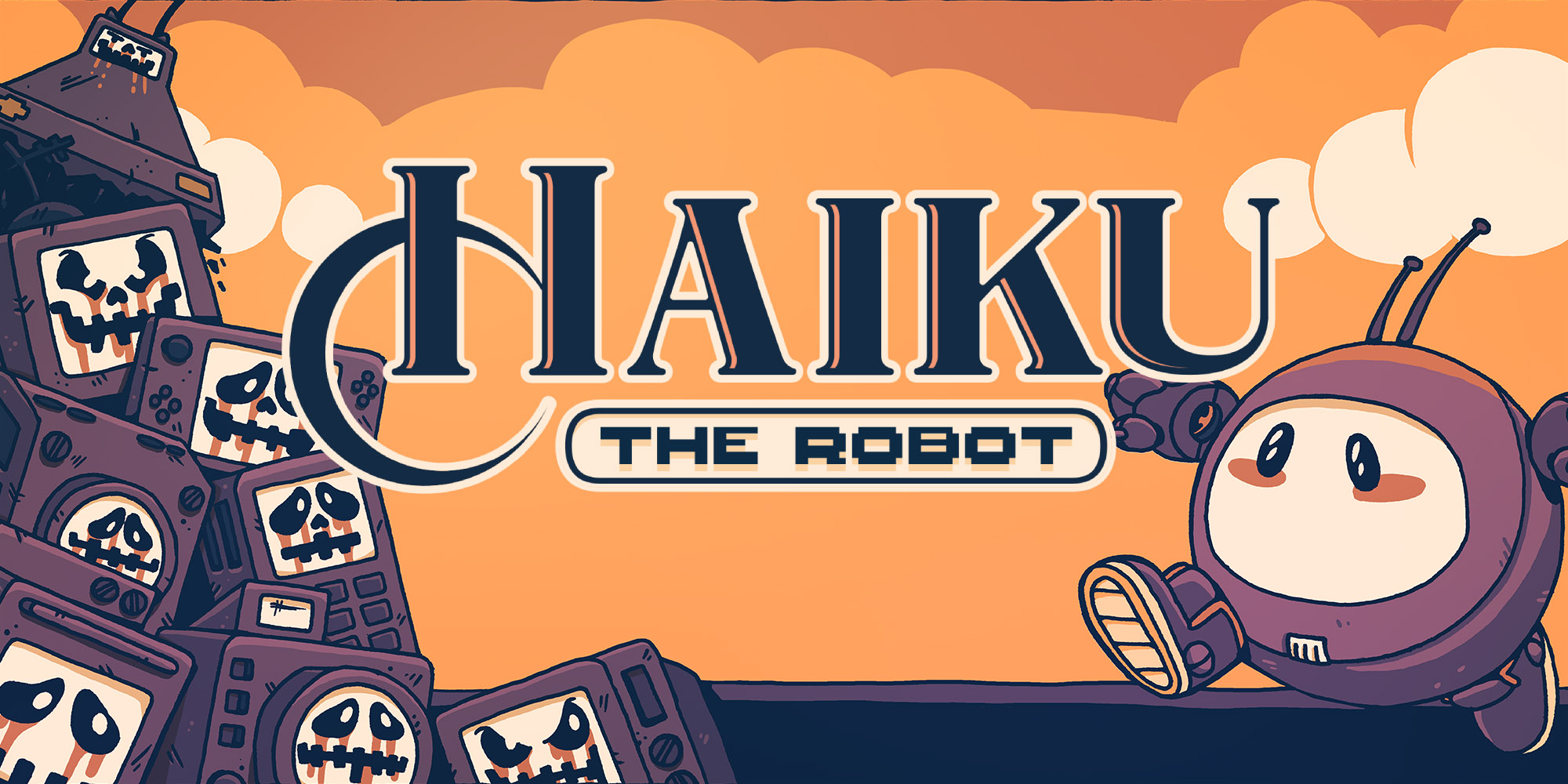Haiku The Robot
Lately, there has been a bit of a soft spot for Metroidvanias in the past couple of years. A 2D platformer that encourages players to discover every nook and cranny while not letting the player know if they are going the "right way" or not. The sense of exploration given to players who stray off to the beaten path and have the skills to stay on the path is second to none. Sometimes, the atmosphere is hindered due to a lack of basic functions, but overall the genre is a very "learn as you guy" centered experience. Haiku The Robot has been able to prove itself a solid Metroidvania at its core from the world it creates.
Haiku The Robot was originally released on Steam a few months ago back in April. The original project was funded via Kickstarter, with a Nintendo Switch release in early September. I was able to be given the opportunity to play this lovely game by the developer himself. Since there is, at the time of this writing, a lack of media coverage for the Nintendo Switch version, I shall do my part in explaining why this is one of the must-own Switch titles in 2022.

The story is set 200 years into the future during a post-apocalyptic world where humans are extinct and robots reign supreme. Unlike our feline friend from Stray who is also in a similar predicament, our hero is a small round cute robot named Haiku. After quickly realizing that some of his brethren have turned hostile against their own kind, Haiku explores various zones to figure out the cause of this behavior while meeting allied robots as well. What's great about the story is that it's one of those that unravels itself the more the player explores the world.
As mentioned, there are occasional NPCs that will talk with Haiku or provide insight into the plot. There's a detective who slowly lets the player know of a bigger scheme at hand. A fellow traveler helps the player by marking important locations on the map. Another cute robot guy who just wishes to be left alone in peace. Finally, a shopkeep who is waiting for a train that never seems to arrive. There isn't a single NPC that is a mere afterthought as several of them are reoccurring, adjusting to the events that Haiku interacts with in real-time.

An example is the shopkeep herself, who has very limited stock due to the missing train. Eventually, Haiku will come across a room with a broken clock and upon fixing the clock, the train is suddenly in service. It seems that the train couldn't function without a functional clock for its timed stops. Regardless, as the train is now running, the player can go to the same shopkeep and enjoy several valuable items and facilities.
Without mentioning the gameplay yet, Haiku The Robot takes scenarios like these and creates a vivid sense of worldbuilding. It's not simply Haiku versus several scary evil robotic variants of familiar machinery. It's all about trying to survive until the next checkpoint graces the player with full health and a safe spot. I'm teasing, there's more to it than that and the balance between risk and reward is surprisingly maintained in Haiku.

In the beginning, Haiku is armed with a sword that they can swing upwards and downwards (only while in the air). The sword in its default state has decent range and swings at an arc that generously hits enemies from a safe enough distance. In the beginning, the enemies range from screws, tires, lug nuts, and other items one would find at a junkyard. Coincidentally, this is the first zone featured in Haiku and the dangers escalate from here. Players will need to be careful as Haiku begins with only four hit points, meaning the game has a chance to end relatively quickly.
Fortunately, as with most Metroidvanias, Haiku has a unique gimmick that sets itself apart from the rest. The little robot can heal itself by using the spare parts found from defeated enemies. These spare parts also double as currency to be used at various shops. The caveats are that self-repair takes several seconds to do so and Haiku is a sitting duckbot. Taking any damage while repairing will cancel the action as well as losing a hit point. The second caveat is that each second spent repairing increases your overheat gauge.

The overheat gauge is Haiku The Robot's version of "Stamina" in other games and it's mainly used to dash. If Haiku overheats, it cannot use any actions until the gauge cools off, which includes self-repair. Still, the option for the player to replenish health away from a safe point is mercy that most players aren't given in other titles. During boss fights, there are moments when the boss stops attacking to signal a new phase. Here the player can decide to pursue more damage or repair the damage taken to ensure survivability. These decisions are all based on confidence.
Dying, however, will cost Haiku half of the spare parts he has on hand. After spending hours accumulating parts, it's a travesty to see all your hard work slammed shut. Unlike Souls-like games, there's no way to recover the spare parts, making each fight a risk. Fortunately, spread across the world are these banks where you can put your spare parts on hand in savings. You cannot lose these spare parts and they are used during transactions, but doing so will limit the amount you can repair yourself. Each health point takes about nine spare parts to restore, so having at least 36 on hand is enough to restore all of your health.

While the goal of Haiku The Robot is in its exploration, the game does a good job at letting the player know what spaces are inaccessible without a power-up. Until the player gets the Magnet power-up, the player can't reach higher areas via wall-kicking Mega Man X-style. Likewise, there are areas where the heat is so intense, Haiku's overheat gauge will instantly spike following an explosion. By the time I reached the water ducts, I realized that water isn't a kind friend to Haiku either. I'd need items to handle the heat and the water, but there was always somewhere else to go.
One of the NPCs tells Haiku to never stop exploring and I feel this is the overall sentiment of the game thus far. You are a small robot in a large and threatening world. You will die and lose progress, but as you explore you'll find ways to mitigate your losses. There are chips that Haiku can equip in safe areas that limit the number of spare parts you lose on death. Others reveal collectibles on the map, increase the sword's length and speed, and summon helper bots to damage enemies. Each loadout is meant to be unique to the player depending on their playstyle and the location it calls for.

Haiku The Robot is one of many Metroidvania's and beat-em-ups on the Nintendo Switch released this year, but this is a must-play for fans. The charming retro-inspired graphics, easy to learn hard to master gameplay, and aesthetic set itself up as a family-friendly experience. Haiku's challenging moments pushed me to play as clean as possible, especially once I identified a boss's pattern. The lesson here is patience. Players who take their time with this expansive universe will see its artistic nature. Sometimes it's nice to stop and smell the rusted metal of a mutant robot out to mince you into parts.
Haiku The Robot is now available on the Nintendo Switch and PC. Players can purchase the Nintendo Switch version Here and the Steam version Here respectively.

